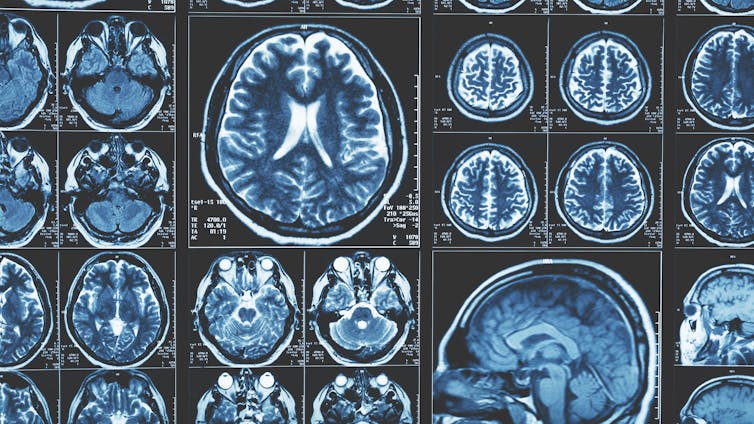Discover Pandipedia
Pandipedia is the world's first encyclopaedia of machine generated content approved by humans. You can contribute by simply searching and clicking/tapping on "Add To Pandipedia" in the answer you like. Learn More
Expand the world's knowledge as you search and help others. Go you!
Let's look at alternatives:
- Modify the query.
- Start a new thread.
- Remove sources (if manually added).
- Request a manual search from our human research team.

To repurpose old furniture, start by considering creative transformations such as turning a dresser into a bathroom vanity or a coffee table into a cushioned bench. You can also paint the furniture for a refreshed look, as chalk paint often eliminates the need for extensive prep work like sanding or priming[1][5].
Look for ideas that mix functionality and style; for instance, a bookshelf can become a kitchen island, or old chairs can be turned into planter stands[2][6]. The process is not only eco-friendly but allows for personal expression in your home decor[3][4].
Let's look at alternatives:
- Modify the query.
- Start a new thread.
- Remove sources (if manually added).
- Request a manual search from our human research team.
Get more accurate answers with Super Search, upload files, personalised discovery feed, save searches and contribute to the PandiPedia.
Introduction
The atmospheric concentration of CO₂ was stable at approximately 270 parts per million (ppm) for at least 1000 years before the Industrial Revolution. However, since then, CO₂ levels have been rising rapidly. In 2009, the concentration had reached 384 ppm, a 40% increase from historical levels[1]. Projections suggest that this could exceed 550 ppm by the middle of the 21st century and 700 ppm by the century's end[1].
Understanding how plants respond to these changes is crucial. Free-Air CO₂ Enrichment (FACE) experiments are essential as they expose plants to elevated CO₂ concentrations in natural settings over extended periods. Here are six important lessons learned from nearly two decades of FACE studies[1].
Enhanced Photosynthesis in C₃ Plants
![None title: 'Fig. 1. Average plots of A/Ci response curves for Trifolium repens grown at ambient [CO2] (;365 lmol mol�1) and elevated [CO2] (;600 lmol mol�1) during spring (May 2001) and autumn (October 2000) at the Swiss FACE array in Eschikon, Switzerland (adapted from Ainsworth et al., 2003b and reproduced by kind permission of Oxford University Press). The maximum RuBP-saturated rates of carboxylation in vivo (Vc,max) were estimated from the initial slopes of each curve, and the maximum in vivo rates of electron transport contributing to RuBP regeneration (Jmax) were estimated using points after the inflection. The black dashed lines indicate the supply functions and resultant photosynthetic rates for plants measured in October, while the grey dashed lines indicate the supply function and resultant photosynthetic rates for plants measured in May.'](https://askpandipro.s3.amazonaws.com/users/1/documents/103/figures/0.jpeg?AWSAccessKeyId=AKIAQT4QH3CHNPX5WHX7&Signature=t0KifgN6Mc0cZc18ceIqsgLeqyo%3D&Expires=1751093757)
One key finding is that elevated CO₂ stimulates photosynthetic carbon gain in C₃ plants despite a process known as acclimation. Acclimation is characterized by a decrease in the maximum carboxylation rate of Rubisco (Vc,max) and the electron transport rate for ribulose-1,5-bisphosphate (RubP) regeneration (Jmax)[1]. However, even with these reductions, the overall rate of photosynthetic carbon uptake (Asat) saw a marked increase. This is particularly true for species limited by Rubisco capacity, such as trees and grasses, which showed more significant photosynthesis increases compared to legumes and other functional groups[1].
Improved Nitrogen Use Efficiency
![Table 1. Estimates of the maximum theoretical saving in leaf N due to Rubisco acclimation at the elevated [CO2] used in FACE experiments Table 1. Estimates of the maximum theoretical saving in leaf N due to Rubisco acclimation at the elevated [CO2] used in FACE experiments](https://askpandipro.s3.amazonaws.com/users/1/documents/103/tables/0.png?AWSAccessKeyId=AKIAQT4QH3CHNPX5WHX7&Signature=iAhcTYxGYM2rUK1cJLIxrlj2iR0%3D&Expires=1751093757)
The second lesson from FACE studies is the improvement in Photosynthetic Nitrogen Use Efficiency (PNUE) in C₃ plants. Theory suggests that as photosynthesis increases, nitrogen use should become more efficient. Findings reveal that PNUE indeed increases by about 31%, driven by elevated photosynthesis rather than a significant reduction in leaf nitrogen content[1]. While the maximum potential nitrogen savings due to down-regulated Rubisco were initially overestimated, the actual figures are lower but still significant[1].
Reduced Water Use
Plants grown in elevated CO₂ have consistently shown reduced stomatal conductance (gs), which leads to lower water use[1]. Evidence from FACE experiments shows a consistent decrease in canopy evapotranspiration (ET) by 5% to 20%, depending on the species and environmental conditions[1]. For example, decreased gs in soybean leaves led to reduced whole-canopy water usage, ensuring higher soil moisture availability, particularly beneficial during drought periods[1].
Increased Dark Respiration in Soybeans
![None title: 'Fig. 3. Graphical representation of transcripts encoding enzymes of carbohydrate metabolism and respiration whose abundance is significantly altered by growth at elevated [CO2] during the day and night in the leaves of soybean grown at SoyFACE. Each blue or yellow box represents the statistically significant treatment response (P <0.05) of a unique transcript encoding an enzyme or protein structure. Insets show mean treatment values (6SE) of the (A) night-time rates of respiratory CO2 efflux and (B) respiratory O2 uptake of soybean leaves grown at ambient and elevated [CO2]. Means sharing a common letter are not statistically different. All data are average responses to elevated [CO2] (550 lmol mol�1) compared to ambient [CO2] (380 lmol mol�1), redrawn from data in Ainsworth et al. (2006) and Leakey et al. (2008).'](https://askpandipro.s3.amazonaws.com/users/1/documents/103/figures/1.jpeg?AWSAccessKeyId=AKIAQT4QH3CHNPX5WHX7&Signature=PDhYnV0PB7rNiEVU7MGwHTX9y4Q%3D&Expires=1751093757)
Dark respiration, the process by which plants break down carbohydrates and produce CO₂ in the dark, was stimulated in soybean leaves grown at elevated CO₂[1]. This was attributed to greater gene expression relating to enzymes involved in carbohydrate metabolism and respiration. Along with increased photosynthesis, this stimulated dark respiration due to more abundant carbohydrate substrates[1]. While this result was particularly evident in soybeans, other species exhibited varied responses[1].
Limited Direct Effects on C₄ Photosynthesis
![None title: 'Fig. 4. Comparing the dependence of photosynthesis (A) on intercellular CO2 concentration (Ci) for C4 maize and C3 soybean. The maize data were fit using the equations for C4 photosynthesis (von Caemmerer, 2000). The soybean data fit according to the C3 leaf biochemical model of photosynthesis of Farquhar et al. (1980). The grey lines illustrate the supply function for CO2, starting at the atmospheric [CO2] and ending at the operating Ci of photosynthesis. This is illustrated for current atmospheric [CO2] (384 lmol mol�1, solid line), elevated [CO2] anticipated for 2050 (550 lmol mol�1, dashed line), and elevated [CO2] anticipated for 2080 (700 lmol mol�1, dashed and dotted line). This figure was redrawn using data from Leakey (2009).'](https://askpandipro.s3.amazonaws.com/users/1/documents/103/figures/2.jpeg?AWSAccessKeyId=AKIAQT4QH3CHNPX5WHX7&Signature=bdLX3Chnajwn5e1MUIXPqqWl5xM%3D&Expires=1751093757)
Contrary to C₃ plants, the direct stimulation of photosynthesis in C₄ plants by elevated CO₂ is negligible. This is because C₄ photosynthetic pathways are already saturated at current atmospheric CO₂ levels[1]. Nonetheless, under drought conditions, elevated CO₂ indirectly enhances photosynthesis in C₄ plants by conserving water and delaying drought stress. For instance, Sorghum and maize benefited from improved water status under dry conditions, leading to better photosynthetic performance and crop yields[1].
Smaller Than Expected Crop Yield Increases
FACE studies have shown that crop yield stimulations in response to elevated CO₂ are smaller than previously expected from theories or controlled environment experiments[1]. For major crops like soybean, the increase in light-saturated photosynthesis and daily carbon uptake at elevated CO₂ fell short of predictions made by chamber studies[1]. While theoretical projections suggested a significant boost in productivity with rising CO₂ levels, FACE results showed more modest increases. This discrepancy between theory and real-world data has profound implications for future food supply projections, highlighting the need for better understanding and optimization of crops under future atmospheric conditions[1].
Conclusion
FACE experiments provide invaluable insights into plant responses to elevated CO₂ levels, highlighting complexities that controlled environment studies cannot replicate. While enhanced photosynthesis and improved nitrogen and water use efficiency were key benefits, the expected yield gains in crop plants were lower than anticipated. These findings underscore the need for continuous research and innovation in agriculture to adapt to increasing CO₂ levels and ensure food security in the future[1].
Let's look at alternatives:
- Modify the query.
- Start a new thread.
- Remove sources (if manually added).
- Request a manual search from our human research team.
Introduction to scRNA-seq Techniques
Single-cell RNA sequencing (scRNA-seq) has revolutionized our understanding of cellular diversity, allowing researchers to analyze gene expression at an unprecedented resolution. Traditional methods typically rely on aligning sequence data to reference transcriptomes, which can present challenges, especially for non-model organisms[1]. In response, researchers have developed reference-free methodologies to enhance the analysis of scRNA-seq data and overcome the shortcomings of conventional approaches[1].
Key Findings in Neurogenesis Research

Recent studies have highlighted the effectiveness of these new methods. For instance, a comprehensive analysis was performed on a dataset related to neurogenesis in the axolotl (Ambystoma mexicanum), a model organism for regenerative biology. The findings indicated elevated levels of ribosomal RNA (rRNA) and mitochondrial RNA (mtRNA) during the peak periods of neurogenesis[1]. This analysis revealed important insights into the gene expression dynamics associated with tissue regeneration, indicating a strong link between rRNA transcription and energy demands during this crucial developmental phase.
Methodology Overview
The reference-free analysis technique called scKAR employs a unique approach to generate k-mer abundance matrices from scRNA-seq data. By focusing on k-mers—contiguous sequences of nucleotides—the method identifies differentially expressed genes without relying on standard reference transcriptomes. This is particularly advantageous for studying organisms where reference genomes are incomplete or absent[1].
As part of the analysis, scKAR captures significant transcripts, enabling the exploration of non-canonical transcriptional events often overlooked in traditional pipelines, such as intron retention and non-coding RNA (ncRNA) expression[1]. In this study, it demonstrated the capacity to uncover essential components of the neurogenesis process.
Insights Gained from Axolotl Data

In the context of the axolotl neurogenesis data, scKAR was able to detect differential expression of microRNA (miRNA) associated with developmental processes. Notably, the study found a marked upregulation of specific rRNA and mtRNA types during injury recovery, emphasizing their role in metabolic regulation and cellular energy production[1].
Heart Disease and Genetic Research
The advancements in scRNA-seq analysis also extend to understanding congenital heart disease (CHD). In a separate analysis of a cardiac dataset comprising over 73,000 samples, researchers examined the roles of intron retention and long non-coding RNA (lncRNA) in heart disease progression. This work aimed to establish a connection between these genomic features and the pathology of heart defects[1].
Notable Findings in Cardiovascular Studies
In exploring the gene expression landscape of patients with CHD, researchers noted differential expression patterns linking retained introns and lncRNAs to critical cardiac regulatory processes. Specific genes with significant overlap in lncRNA expression were associated with metabolism and cellular growth—factors crucial for understanding heart function[1]. The study utilized scKAR to effectively pinpoint genes that exhibit differential expression related to CHD, paving the way for future therapeutic insights.
The Role of Intron Retention
Interestingly, the study identified that intron retention is commonly associated with various diseases, including neurodegenerative disorders. The mechanisms underlying intron retention remain a rich area for investigation, particularly as these events could serve as biomarkers for disease[1]. The correlation of specific retained introns with clinical outcomes highlights their potential in personalized medicine.
Conclusion: Implications for Future Research
The scKAR methodology represents a significant advancement in the field of gene expression analysis, particularly for non-model organisms where reference genomes are lacking. By facilitating the identification of differentially expressed k-mers and uncovering complex transcriptional events, researchers can gain deeper insights into biological phenomena such as neuroregeneration and the pathophysiology of heart diseases[1].
Next Steps in Research
Moving forward, the application of reference-free methods like scKAR could reshape our understanding of genetic expression across various scientific fields. The ongoing exploration of intron retention and lncRNA roles may lead to breakthroughs in diagnosing and treating complex diseases, particularly those related to developmental and cardiovascular health. Future studies will likely leverage these techniques to unravel additional layers of genetic regulation and their implications for health and disease management[1].
Let's look at alternatives:
- Modify the query.
- Start a new thread.
- Remove sources (if manually added).
- Request a manual search from our human research team.

MacBook Air (M3)
Lightweight, high-performance laptop with all-day battery life, ideal for remote work on the go[4].
Portable WiFi Hotspot
Reliable internet connectivity even in remote locations, available in many countries without needing a local SIM card[4].
Noise-Canceling Headphones
Industry-leading headphones that provide exceptional noise cancellation, perfect for working in busy places[4].
Power Bank (Anker)
Reliable power bank to keep your devices charged during travel days with limited outlet access[3].
Folding Laptop Stand
Lightweight stand to improve ergonomics, keeping your laptop at eye level for better posture[2].
Universal Travel Adapter
Essential for charging devices in different countries, accommodating various outlet types[1].
Compact Travel Backpack
Durable backpack designed for organization, with compartments for gadgets and travel essentials[4].

Portable Monitor
Secondary screen to enhance productivity through multitasking, suitable for various work environments[2].
External Hard Drive
Rugged, lightweight storage solution to keep your files safe and accessible while traveling[4].
Ergonomic Wireless Mouse
Wireless mouse that reduces wrist strain and increases productivity for long work sessions[3].

Let's look at alternatives:
- Modify the query.
- Start a new thread.
- Remove sources (if manually added).
- Request a manual search from our human research team.
Let's look at alternatives:
- Modify the query.
- Start a new thread.
- Remove sources (if manually added).
- Request a manual search from our human research team.
Get more accurate answers with Super Search, upload files, personalised discovery feed, save searches and contribute to the PandiPedia.
Let's look at alternatives:
- Modify the query.
- Start a new thread.
- Remove sources (if manually added).
- Request a manual search from our human research team.
Unique Features of the Human Brain

The human brain stands out significantly from those of other animals due to its complex structure, advanced cognitive abilities, and unique neuronal characteristics. This report synthesizes insights from various studies and expert opinions to outline the distinctive features that contribute to the uniqueness of the human brain.
Size and Structure

One of the most apparent differences between the human brain and those of other animals is its size and structure. The human brain typically weighs about 1.2 kg and is larger in proportion to body size compared to other primates, such as chimpanzees, whose brains are roughly one-third the size of a human brain. A key reason for this weight and size difference is the evolutionary expansion of the association cortex, which is crucial for complex cognitive functions like language, self-awareness, and problem-solving[4]. Furthermore, humans possess a larger cerebral cortex, containing around 16 billion neurons as opposed to the fewer neurons found in most other animals[3].
Additionally, unique characteristics in human neurons have been identified, such as a lower density of ion channels compared to other mammals, which allows for more efficient energy use in processing information. This adaptation enables complex synaptic connections and rapid firing of action potentials necessary for sophisticated cognitive tasks[1].
Advanced Cognitive Abilities

Humans exhibit enhanced cognitive abilities that facilitate complex thought processes and social interactions. Notable among these is the ability for 'nested scenario building,' which refers to the capacity to imagine and reflect on alternative situations within larger narratives[13]. This capability equips humans to plan and make decisions based on future possibilities, a skill that is less developed in other animals.
Central to human cognitive processes are 'concept cells,' or 'Jennifer Aniston neurons,' which uniquely respond to abstract concepts, allowing for complex memory formation and high-level thinking that is generally not observed in animals[5]. These neurons store meanings devoid of contextual details, supporting advanced reasoning and the ability to make inferences, analogies, and associative connections[5].
Another significant cognitive feature is the concept of 'shared intentionality,' which describes the mutual understanding individuals have when engaging in collaborative tasks. This capacity for cooperation enhances human social interactions and cultural developments, allowing for shared experiences and collective knowledge transfer across generations, known as the 'ratchet effect'[2].
Emotional Complexity and Social Behavior

The human brain is also distinguished by its higher level of emotional complexity and social behavior. The development of the prefrontal cortex is linked to advanced social functions such as empathy, cooperation, and moral reasoning[7]. These traits are critical for forming intricate social bonds and navigating the complexities of human relationships. While some animals exhibit social behaviors, the depth and breadth of human emotional intelligence, tied to cognitive development, are markedly superior.
Synergistic Information Processing
In terms of information processing, the human brain displays a higher level of 'synergistic' interactions than that of other primates like macaques. Synergistic processing encompasses patterns where information flow across different brain regions exceeds the sum of their individual contributions, particularly in areas responsible for complex functions like learning and social cognition[6]. This capacity for synergistic interactions not only enhances cognitive efficiency but also fosters the integration of various types of information to support advanced problem-solving abilities unique to humans.
Genetic and Cellular Distinctions

Further distinguishing features are linked to the genetic and cellular makeup of the human brain. Studies indicate the presence of species-specific neuron types, including a unique microglia type that plays a role in brain maintenance and disease response[10]. The differential expression of genes, such as the FOXP2 gene associated with language and communication, highlights the genetic underpinnings of cognitive capabilities that are specific to humans[10].
Prolonged Development and Learning

The human brain's ability to undergo prolonged developmental phases also sets it apart. This extended period allows for substantial learning and cognitive skill acquisition, crucial for mastering complex tasks such as toolmaking, control of social dynamics, and theory of mind[8]. This developmental approach emphasizes the interplay between genetic predispositions and environmental influences on cognitive development, leading to significant variations in cognitive abilities among human populations[16].
Connectivity and Functional Networks
Finally, the structural connectivity of the human brain exhibits distinct patterns that enhance cognitive functions. Research has identified unique long-range connections in the human brain that facilitate complex processing related to language, reasoning, and social cognition, differentiating it from the brains of other primates[15]. The unique aspects of the human connectome contribute significantly to advanced cognitive functions, allowing humans to engage in more sophisticated interactions and cultural expressions.
Conclusion

In summary, the human brain's uniqueness arises from a combination of its size, structural complexity, advanced cognitive abilities, emotional depth, and genetic factors. The interconnections among these features enable humans to navigate complex social landscapes, innovate, and evolve culturally, creating a disparate cognitive experience that sets our species apart from others. As research continues, further understanding of these characteristics may illuminate the evolutionary trajectory that has shaped the human brain.
Let's look at alternatives:
- Modify the query.
- Start a new thread.
- Remove sources (if manually added).
- Request a manual search from our human research team.
Let's look at alternatives:
- Modify the query.
- Start a new thread.
- Remove sources (if manually added).
- Request a manual search from our human research team.

The most important best practice is to provide (one shot / few shot) examples within a prompt
Unknown[1]
These examples showcase desired outputs or similar responses, allowing the model to learn from them and tailor its own generation accordingly
Unknown[1]

These examples showcase desired outputs or similar responses, allowing the model to learn from them and tailor its own generation accordingly
Unknown[1]
This approach aligns with how humans prefer positive instructions over lists of what not to do
Unknown[1]
High-quality instructions are essential for any LLM-powered app, but especially critical for agents
Unknown[2]
Let's look at alternatives:
- Modify the query.
- Start a new thread.
- Remove sources (if manually added).
- Request a manual search from our human research team.































